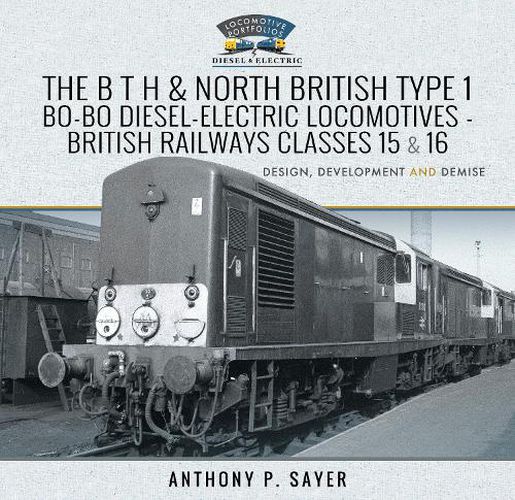Readings Newsletter
Become a Readings Member to make your shopping experience even easier.
Sign in or sign up for free!
You’re not far away from qualifying for FREE standard shipping within Australia
You’ve qualified for FREE standard shipping within Australia
The cart is loading…






The British Railways Pilot Scheme’ orders of 1955 included ten BTH and ten NBL Type 1 locomotives, these being introduced during 1957-61 for use in East London, and on the Great Eastern and London, Tilbury & Southend lines. The BTH fleet subsequently expanded to forty-four, as a consequence of their light axle-loading and the availability of spare manufacturing capacity which BR chose to exploit in their quest to eliminate steam traction. Further construction of these two classes ceased after the fifty-four units, with preference being given to the highly reliable English Electric product which by mid-1962 had proliferated to 128 examples. The NBL fleet survived until 1968, being withdrawn after ten years of indifferent performance. The BTH locomotives followed by 1971, although four lingered on as carriage pre-heating units. Dramatic reductions in goods traffic during the 1960s/70s particularly impacted local trip and transfer freight duties, the bread and butter’ work for the Type 1s, and it was inevitable that the less successful classes were retired from traffic first. This book looks at the short history of these two classes, making extensive use of archive sources, combined with the primary observations of numerous enthusiasts. Previously unpublished information, covering the introduction, appearance design and performance issues of the locomotives, form a central focus, and, allocations, works histories, storage and disposals, liveries and detail differences are covered in the same level of detail as previous volumes in the Locomotive Portfolio series. AUTHOR: Anthony Sayer is a life-long railway enthusiast with an interest in the history of the early British diesel and electric locomotive classes. This is the author’s fourth book in the Locomotive Portfolio (Diesel & Electric) series, following on from the North British Type 2 Bo-Bo diesel-electric (Classes 21 & 29), the Metropolitan-Vickers Type 2 Co-Bo diesel-electric (Class 28) and the Clayton Type 1 Bo-Bo diesel-electric (Class 17) books published in 2019 to 2020. Anthony lives in the north-east of England and has now retired after 37 years in the steel industry with responsibilities in both transport planning and supply-chain logistics.
150 colour & b/w illustrations, weight diagrams
$9.00 standard shipping within Australia
FREE standard shipping within Australia for orders over $100.00
Express & International shipping calculated at checkout
The British Railways Pilot Scheme’ orders of 1955 included ten BTH and ten NBL Type 1 locomotives, these being introduced during 1957-61 for use in East London, and on the Great Eastern and London, Tilbury & Southend lines. The BTH fleet subsequently expanded to forty-four, as a consequence of their light axle-loading and the availability of spare manufacturing capacity which BR chose to exploit in their quest to eliminate steam traction. Further construction of these two classes ceased after the fifty-four units, with preference being given to the highly reliable English Electric product which by mid-1962 had proliferated to 128 examples. The NBL fleet survived until 1968, being withdrawn after ten years of indifferent performance. The BTH locomotives followed by 1971, although four lingered on as carriage pre-heating units. Dramatic reductions in goods traffic during the 1960s/70s particularly impacted local trip and transfer freight duties, the bread and butter’ work for the Type 1s, and it was inevitable that the less successful classes were retired from traffic first. This book looks at the short history of these two classes, making extensive use of archive sources, combined with the primary observations of numerous enthusiasts. Previously unpublished information, covering the introduction, appearance design and performance issues of the locomotives, form a central focus, and, allocations, works histories, storage and disposals, liveries and detail differences are covered in the same level of detail as previous volumes in the Locomotive Portfolio series. AUTHOR: Anthony Sayer is a life-long railway enthusiast with an interest in the history of the early British diesel and electric locomotive classes. This is the author’s fourth book in the Locomotive Portfolio (Diesel & Electric) series, following on from the North British Type 2 Bo-Bo diesel-electric (Classes 21 & 29), the Metropolitan-Vickers Type 2 Co-Bo diesel-electric (Class 28) and the Clayton Type 1 Bo-Bo diesel-electric (Class 17) books published in 2019 to 2020. Anthony lives in the north-east of England and has now retired after 37 years in the steel industry with responsibilities in both transport planning and supply-chain logistics.
150 colour & b/w illustrations, weight diagrams